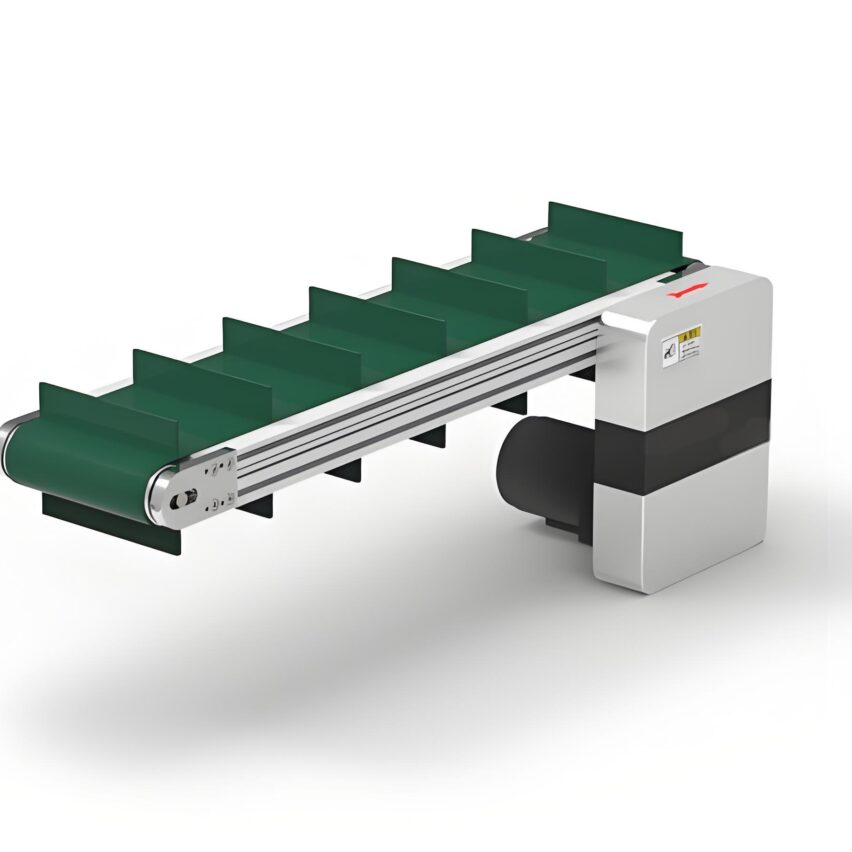I. Technological evolution: from mechanical drives to neuralised systems
Modularity Beginnings in the 1980sThe foundation of the chain conveyor was laid - standardised chain plates (pitch 38.1mm) with alloy beams freely assembled for flexible layout of the production line. Today, it has evolved into"Mechanical-Data Duo"::
- The Flexible Connectivity Revolution: Modular storage units isolate process failures, reducing automotive welding line downtime by 40%;
- precision leapServo control positioning accuracy of ±1mm, 20 times higher than traditional transmission, semiconductor packaging yield exceeded 99.97%;
- Neuralised feedback: Vibration sensor + temperature monitoring real-time regulation parameters, injection moulding products deformation rate decreased by 72%.
personal viewpointTechnology iteration can easily fall into the trap of "advancement only". A power plant pushed AGV logistics but ignored protocol compatibility, leading to a drop in beat 15%--Real upgrades require bridging "data silos" rather than piling on the hardware..
II. Core architecture: a four-dimensional synergistic technology matrix
1. Perceptual layer: industrial multimodal senses
- Machine Vision + Pressure Sensing: Automotive parts QC speed up by 3001 TP3T and false positive rate down to 0.021 TP3T;
- Edge Prediction System: Bearing loss model warns of failures 72 hours in advance, shortening maintenance response by 70%.
2. Control layer: distributed decision centre
- PLC + 5G Industrial Network: 200 devices with millisecond response and order delivery cycle compression of 40%;
- virtual debugging of digital twins: Hot runner parameters are validated in a virtual environment and pilot production costs are reduced by 90%.
3. Implementation layer: heavy-duty transmission innovations
- Dual Lift AGV System: ±0.5mm precision synchronised lifting of the chassis, eliminating friction line "blind spot waiting";
- Double Chain TechnologyNylon roller chain with a load of 2.2 tonnes in a single link and an inclination angle of 50°, but still no powder spillage.
4. Logistics layer: dynamic route optimisation
- Magnetic Levitation Cross-Level Conveying: -196℃ liquid nitrogen environment zero friction transport, energy consumption is only the traditional 5%;
- Intelligent Sorting Shuttle: Courier hub sorting efficiency of 40,000 items/hour with an error rate of less than 0.005%.
Third, the industry's pain points: high-end dependence and customised breakthroughs
stranglehold (literally or figuratively)
- Import rate of core components exceeds 60%: High-precision gearboxes and high-temperature-resistant bearings constrain autonomy;
- conflict between hygiene and explosion protectionLithium battery workshop needs resistance 10⁶-10⁹Ω static dissipative chain, general-purpose equipment is difficult to meet.
Scenario-based Innovation Path
- Pharmaceutical aseptic production line: Fully sealed stainless steel mesh belt + in-line cleaning (CIP), biological contamination risk reduced by 99% (in line with GMP specifications);
- Heavy Duty Mining Systems: Patterned belt conveyor solves limestone powder spills and extends wear life by 3 times;
- 3C Antistatic Cable: Carbon nanotube coated conveyor belts with charge dissipation <0.5 sec.
personal experienceCustomisation is never a patchwork. A new energy plantBinding of AGV paths to plant column positioning points, eliminating the cost of laser navigation 30%-Real Innovation Requires Reconstructing DNA-Level Logic in Factories.
IV. Future Leap: Intelligent and Green on Two Tracks
Global market size to exceed $20 billion by 2027, China's share rose to 30% ($6bn) as three major changes accelerated:
- Dynamic beat matching: RFID identification of models.Automatic adjustment of the conveyor speed to compensate for the difference in working hoursThe 8 model has a mixing balance rate of 92%;
- Superconducting Logistics Network: Military-grade wireless technology enables 200 nautical mile cross-domain communications, and industrial adaptation may eliminate wiring costs altogether;
- Reconfigurable production lines: Modular chain plate 10-minute switching layout, equipment reuse rate increased to 80%.
Exclusive data insights: 2030open architecture systemWill account for 65% of high-end production lines, forcing equipment vendors to transition"Data + M&E" integration service provider--Those enterprises that are still competitive on the basis of "price per tonne of steel" will be eliminated from the market.
Self-questioning: penetrating the essence of the industry
Q1: How can SMEs apply chain conveyor at low cost?
Phased Retrofit + Used Equipment EcologyPriority is given to upgrading bottleneck processes (e.g., automatic inspection stations), and the cost of FlexLink chain link system's old line reconstruction accounts for only 15%; the global circulation rate of used equipment reaches 32%, which reduces the initial investment by 40%.
Q2: How can chain conveyors resist traditional rollers in heavy-duty scenarios?
Extreme Load + Tilt BreakBending plate chain single section load ≥ 1 tonne (roller single section only 200kg), pattern belt conveyor support 50 ° inclination angle conveying, completely solve the mine powder spillage.
Q3: Where is China's technology overtaking point?
Policy Driven + Scenario AttackUnder the impetus of "Made in China 2025", high-temperature resistant rollers for photovoltaic glass (1.5t/800℃), cold chain gearboxes (-50℃ brittleness resistance) and other segments are breaking through the general technical barriers of international giants.













